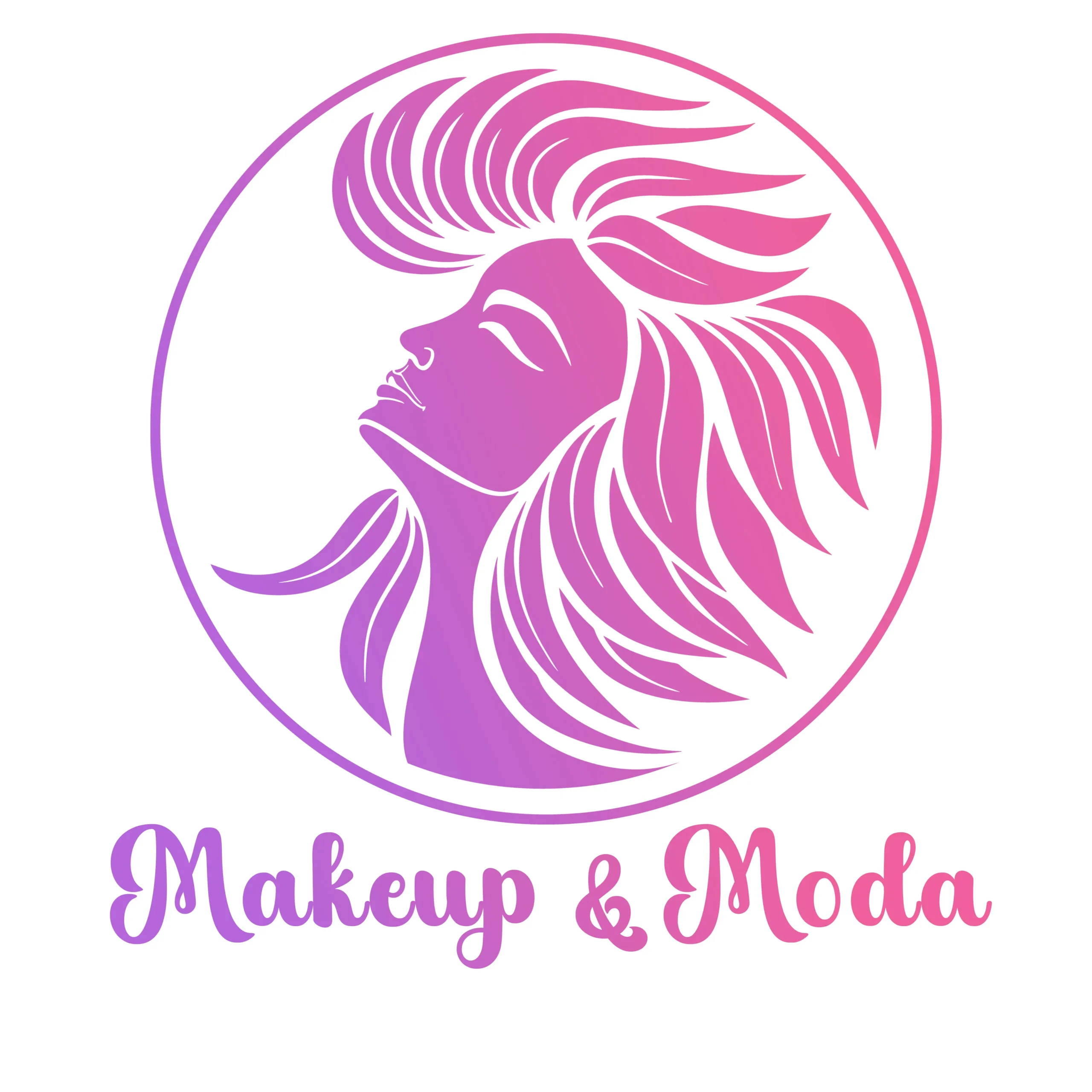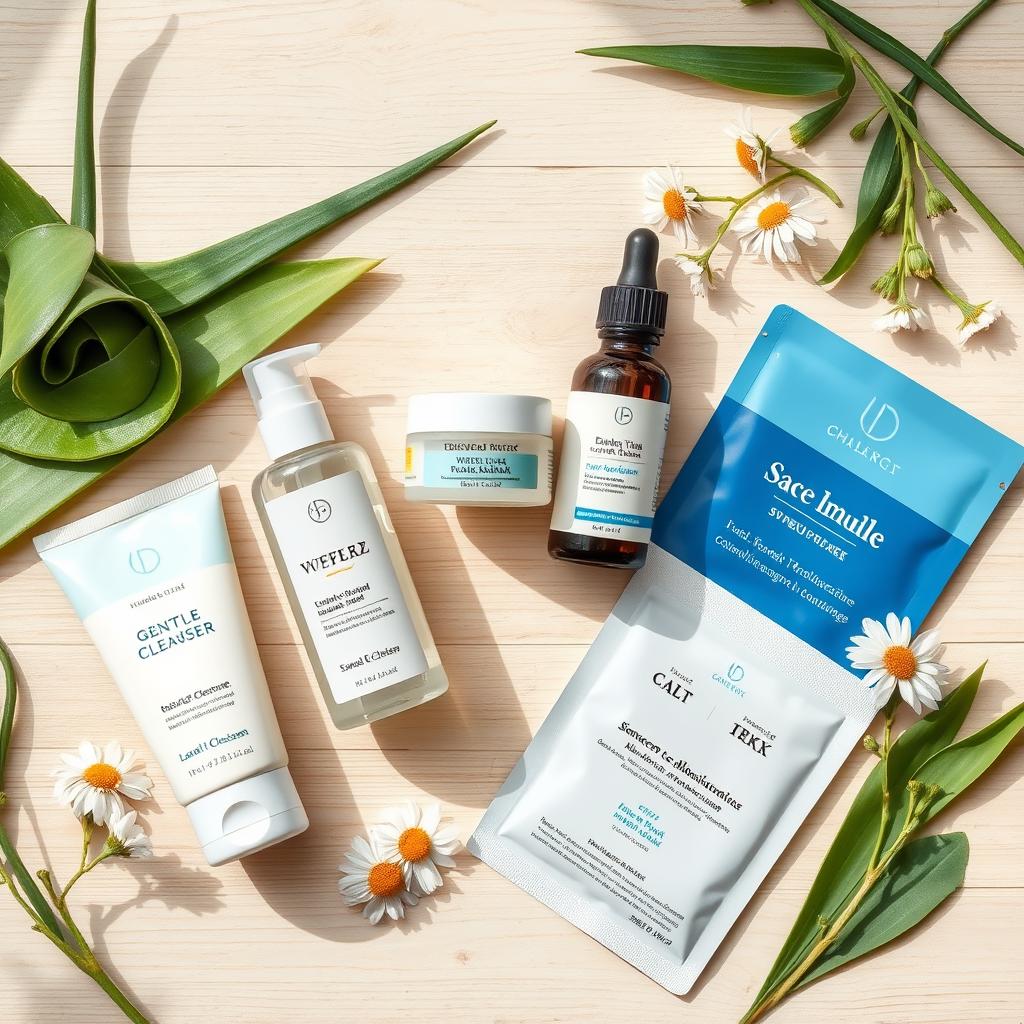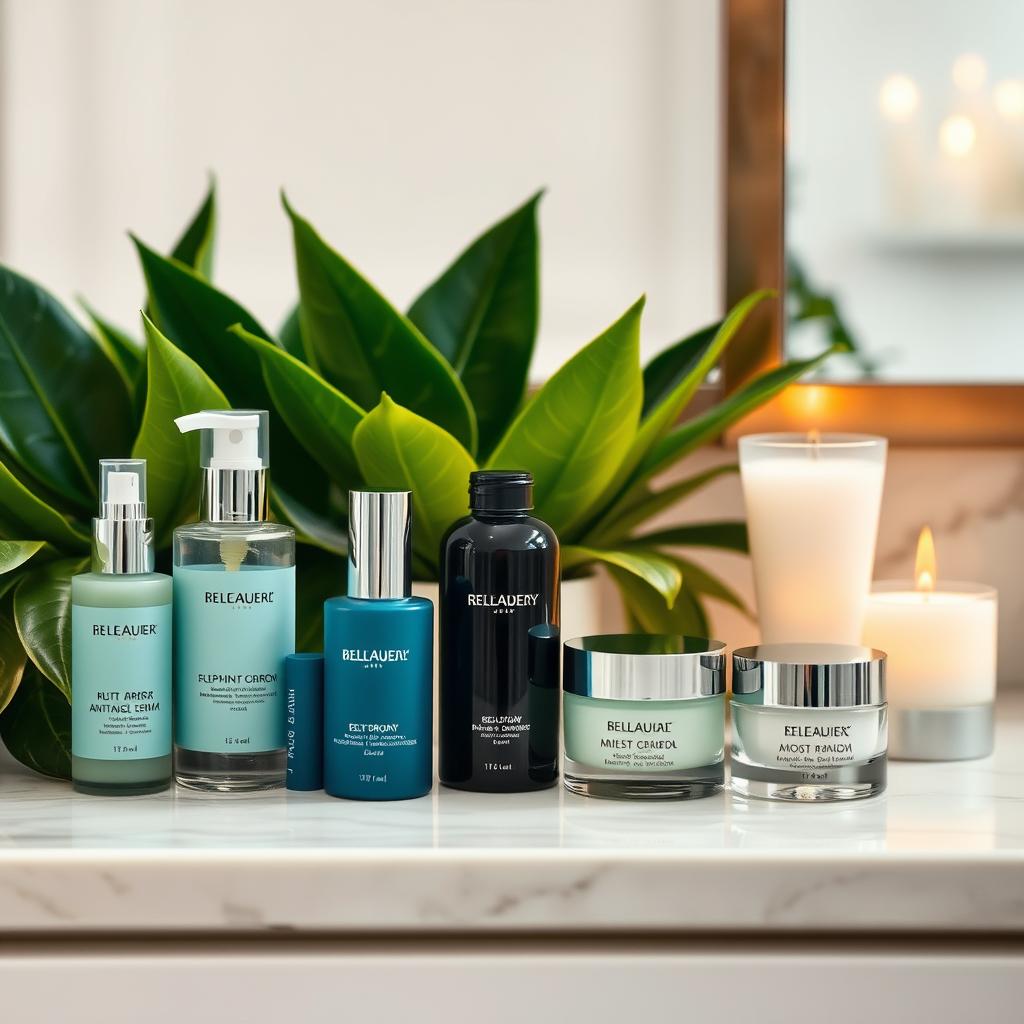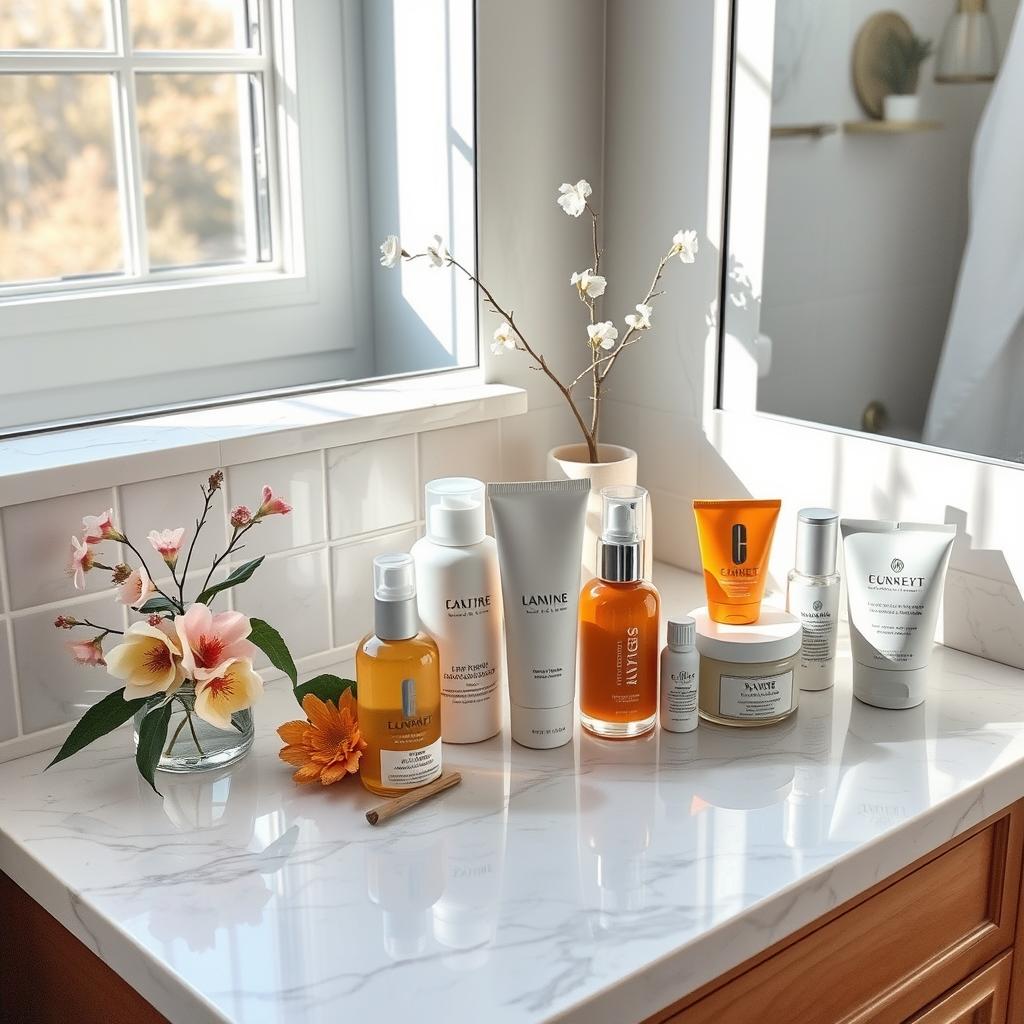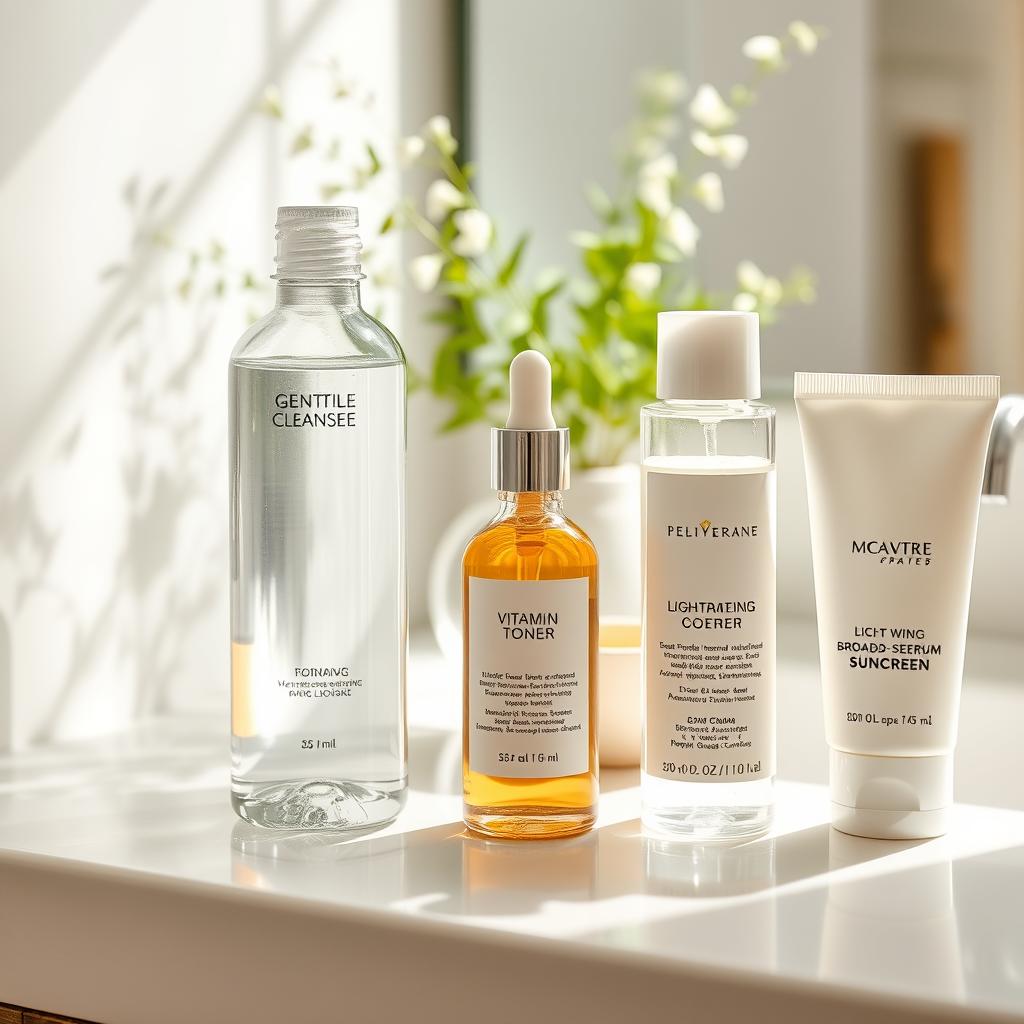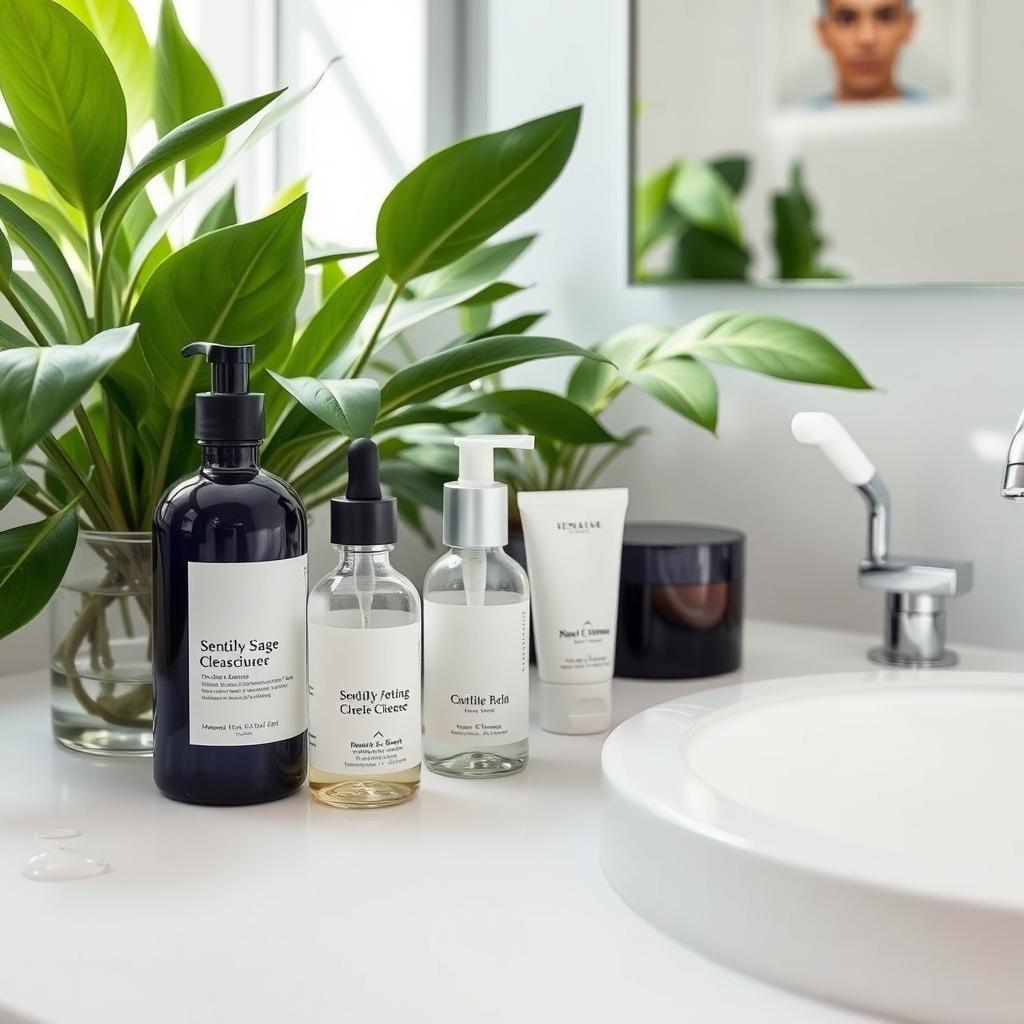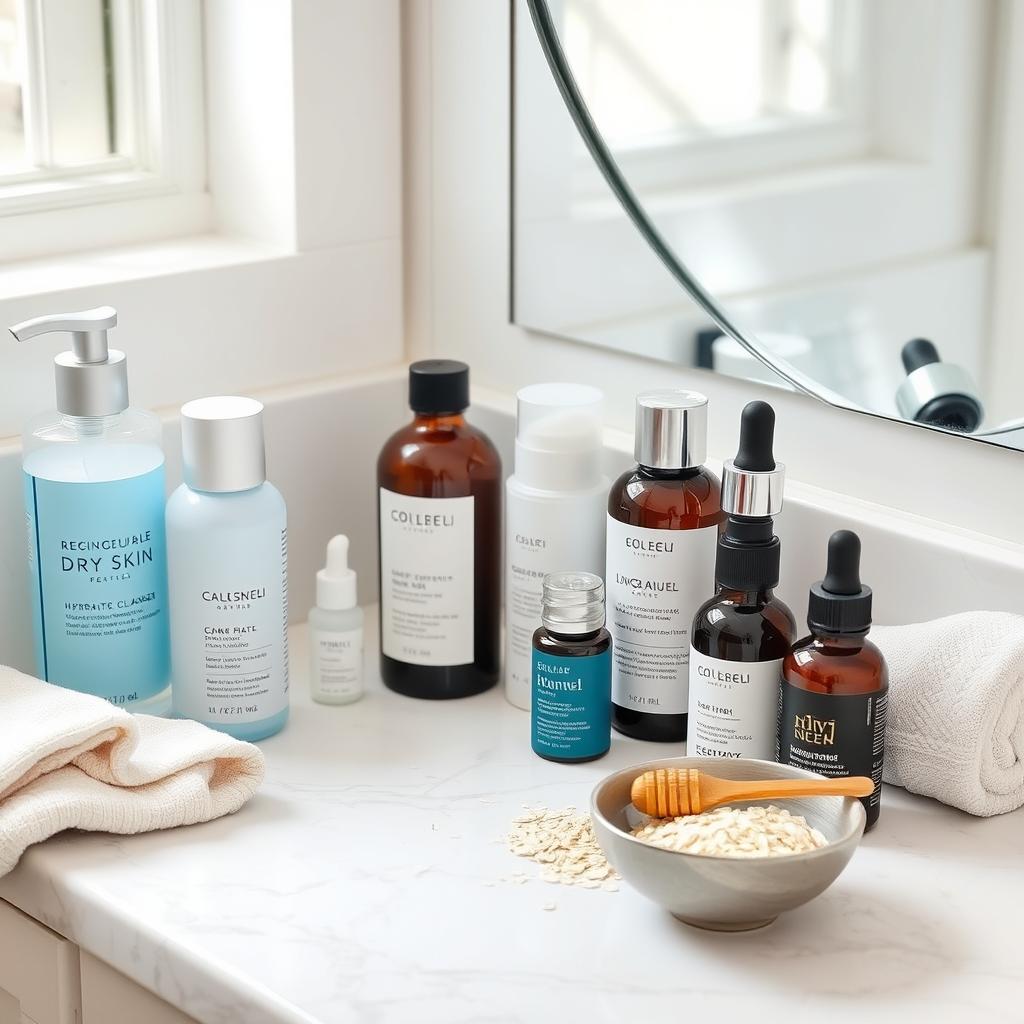How to Build a Budget-Friendly Skincare Routine That Works
Can you get glowing, healthy skin without spending a lot? The skincare market is set to hit over $190 billion by 2025. This shows that you don’t need to break the bank for great skincare. I’ve found that a budget-friendly skincare routine is totally doable.
Now, you can find affordable skincare at drugstores. These stores offer beauty solutions that are easy on your wallet. I’ve learned that you can have amazing skin without spending a fortune on fancy brands. The secret is knowing what really matters in your skincare routine.
Drugstore skincare products usually cost between $10 and $30. This makes them a great choice for those on a budget. By choosing wisely and sticking to the basics, you can have a complete skincare routine that works. And it won’t cost you an arm and a leg.
Key Takeaways
- Effective skincare doesn’t require expensive products
- Drugstore brands offer quality alternatives to luxury skincare
- A basic routine can cost less than $30 total
- Ingredient quality matters more than brand name
- Consistency is key to skincare success
- Multi-purpose products can save money
- Research and smart shopping are key for budget skincare
Understanding My Skin Type
Figuring out my skin type is key to a budget-friendly skincare routine. Skincare isn’t a one-size-fits-all deal. Knowing my skin’s unique traits can save me money and help me avoid buying the wrong products.
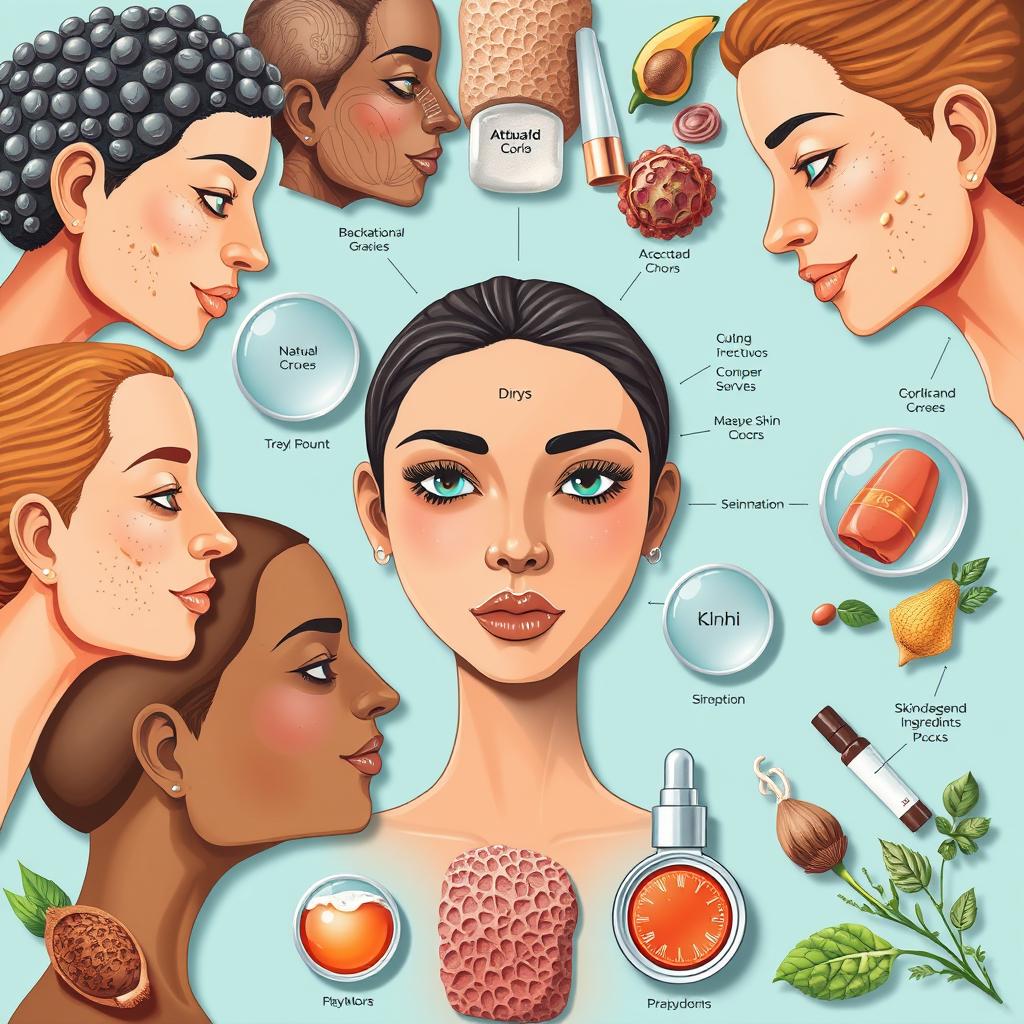
Finding the right skincare starts with knowing my skin type. Dermatologists say there are five main skin types:
- Normal Skin: Balanced and least problematic
- Dry Skin: Feels tight and may show flakiness
- Oily Skin: Produces excess sebum, appears shiny
- Combination Skin: Mixed characteristics across different facial zones
- Sensitive Skin: Prone to redness and irritation
Why My Skin Type Matters
Knowing my skin type helps me shop smarter in the drugstore. It stops me from spending on products that might cause problems. The blotting sheet test shows how oily my skin is in different areas.
“Understanding your skin is the first step to a successful skincare routine” – American Academy of Dermatology
Identifying My Unique Skin Characteristics
Every skin type needs its own special care. For example, oily skin does well with non-comedogenic products, while dry skin needs more moisture. A budget-friendly routine starts with knowing these needs, helping me spend on products that really work.
Remember, my skin type can change with age, hormones, and the environment. Regular checks keep my skincare routine up-to-date and effective.
Key Elements of a Skincare Routine
Creating a good skincare routine doesn’t have to cost a lot. I’ve learned that simple steps can greatly improve your skin’s health. It’s all about being consistent and choosing the right products.
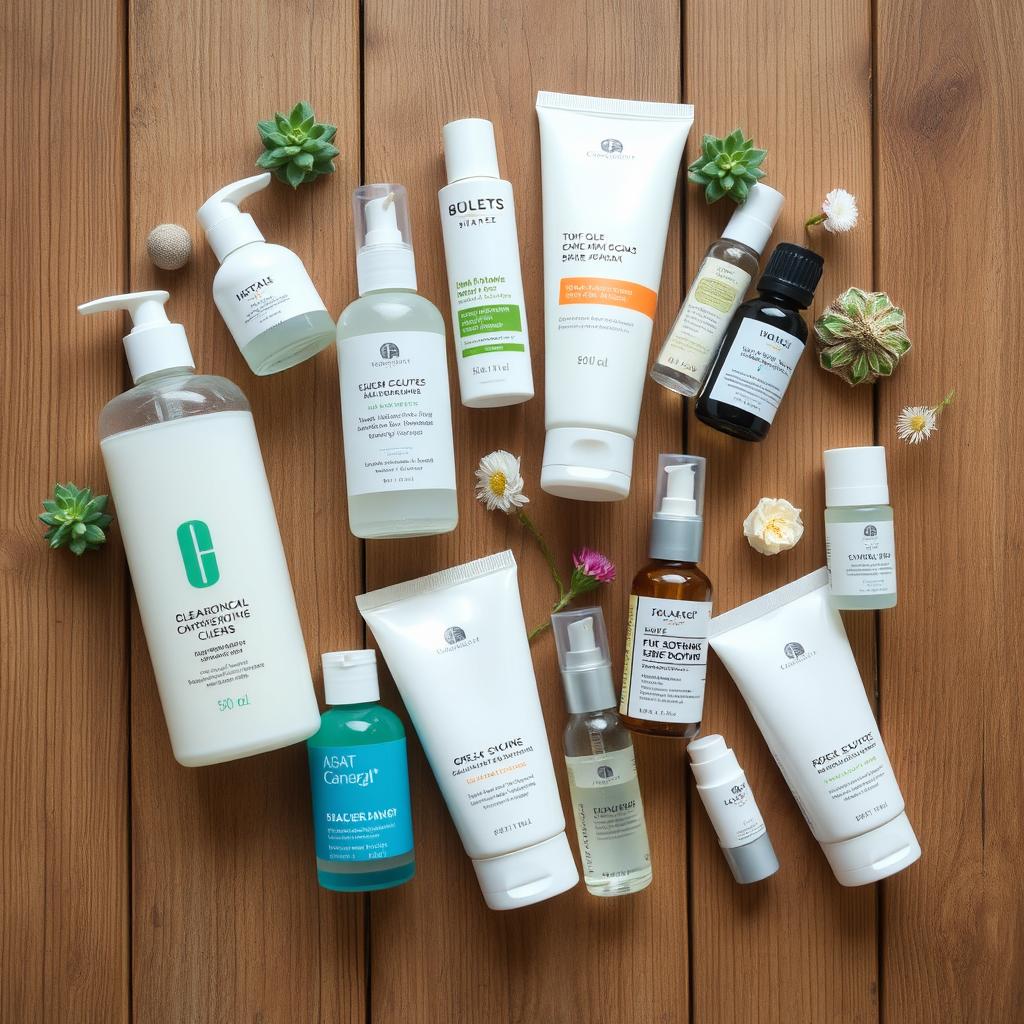
Dermatologists say there are three key steps for healthy skin. These steps can be done with budget-friendly products. This way, you can take care of your skin without spending a lot.
Cleansing: The Foundation of Skincare
Cleansing is the first and most important step in any skincare routine. It’s vital because we touch our faces a lot. This can harm our skin if we don’t clean it properly.
- Choose gentle, affordable cleansers
- Avoid harsh chemicals that strip natural oils
- Use lukewarm water to protect skin barrier
Moisturizing: Keeping Skin Hydrated
Keeping your skin hydrated doesn’t have to be expensive. Studies show that ingredients like urea can really help. They make your skin feel soft and moist.
| Skin Type | Recommended Moisturizer | Key Benefits |
|---|---|---|
| Oily Skin | Lightweight, water-based | Reduces excess oil |
| Dry Skin | Thick, oil-based creams | Intense hydration |
| Sensitive Skin | Fragrance-free options | Minimizes irritation |
Sun Protection: Essential Daily Defense
Sunscreen is non-negotiable. Only 51% of people wear sunscreen every day. It’s important to use a broad-spectrum SPF 30 product for all skin tones.
Investing in sun protection today saves your skin from damage tomorrow.
Pro tip: Look for products that do more than one thing. For example, moisturizers with SPF. Many affordable brands have good products with ingredients like vitamin C and hyaluronic acid.
Choosing Affordable Products
Creating an economical skincare routine doesn’t mean you have to sacrifice quality. With smart shopping and knowledge, you can make a low-cost beauty routine that works well. It won’t cost you a lot of money.
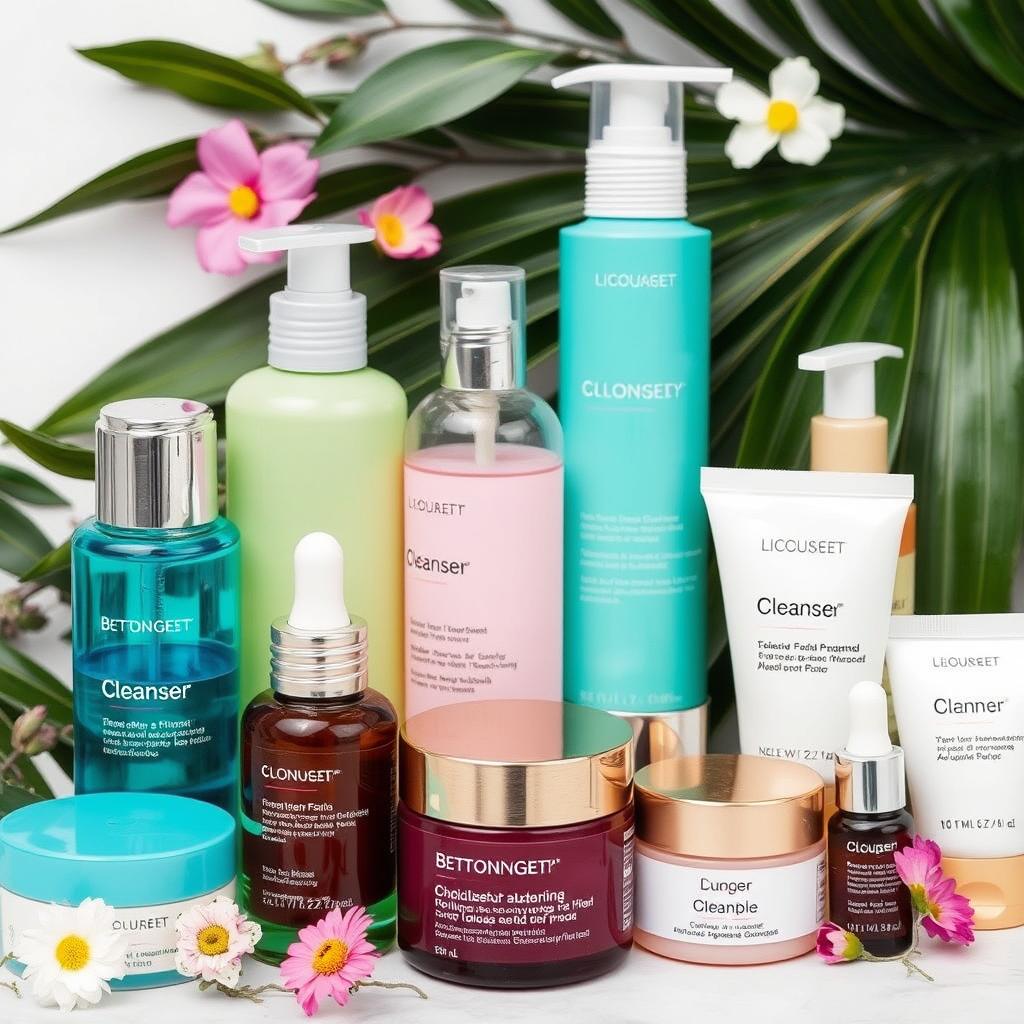
What to Look for in Budget Skincare
When picking affordable skincare, look for these important things:
- Active ingredients that match your skin concerns
- Dermatologist-recommended formulations
- Multi-purpose products that offer maximum value
- Minimal packaging to reduce costs
Brands That Offer Value Without Compromise
Many brands offer great skincare without high prices:
- CeraVe: Dermatologist-approved moisturizers
- The Ordinary: Targeted treatments at affordable prices
- Neutrogena: Reliable products for various skin types
- Farmacy: Natural ingredients without high costs
Ingredient Lists to Consider
My strategy for budget skincare is to look for powerful yet affordable ingredients:
- Hyaluronic acid for hydration
- Niacinamide for oil control
- Glycerin for moisture retention
- Ceramides for skin barrier protection
“Smart skincare is about understanding ingredients, not just brand names.” – Dermatology Expert
By focusing on key ingredients and trusted budget brands, you can create an effective skincare routine. It will keep your skin healthy without spending too much.
Building a Simple Daily Routine
Creating a budget-friendly skin care routine doesn’t mean you have to sacrifice quality. My method focuses on key steps that offer great results without spending a lot. It’s all about finding essential products that meet your skin’s needs without breaking the bank.
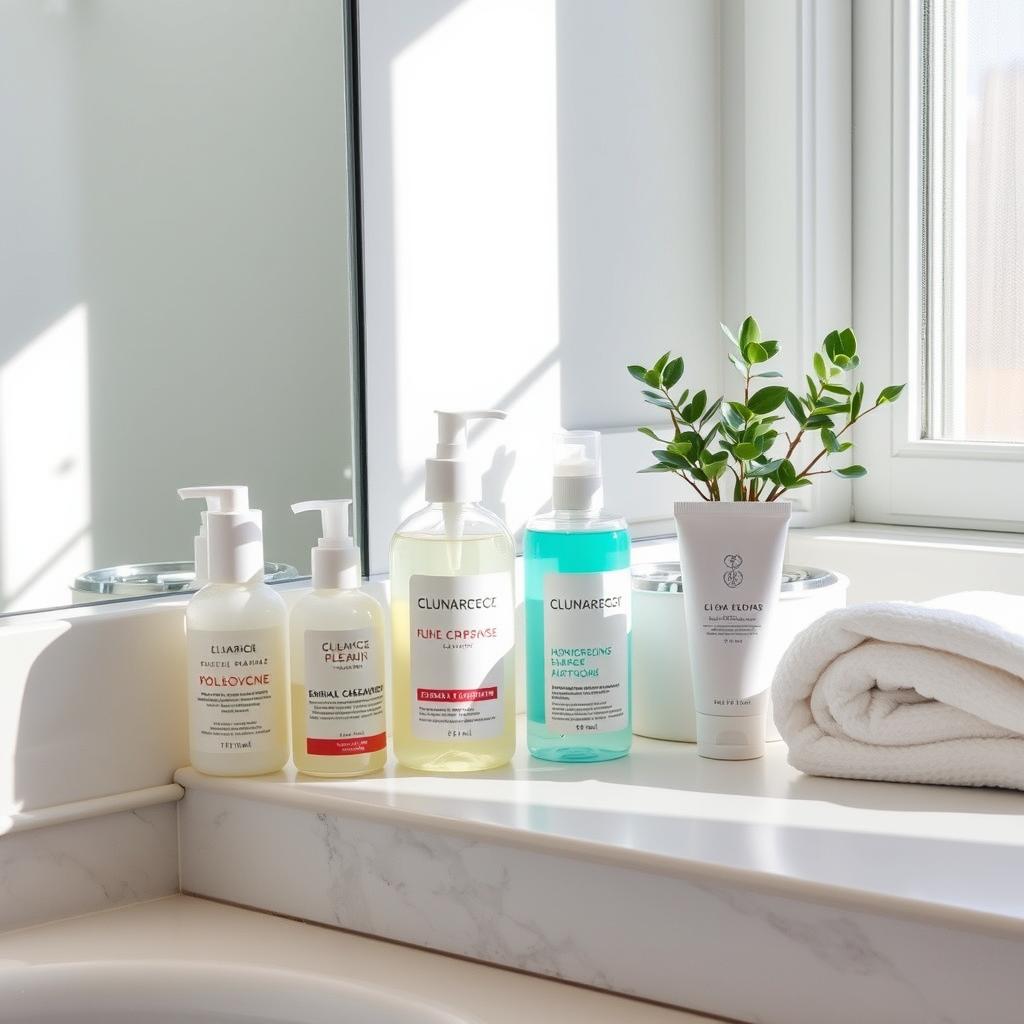
A good skincare routine can be broken down into four main steps. Dermatologists suggest using basic products that tackle your skin issues while keeping things simple.
Morning Routine Essentials
- Gentle Cleanser: Good Molecules Hydrating Facial Cleanser ($12)
- Vitamin C Serum for brightening
- Lightweight Moisturizer
- Broad-spectrum SPF 50 Sunscreen
Nighttime Routine Breakdown
- Clarifying Cleanser: Good Molecules Clarify and Cleanse Bar ($5)
- Niacinamide Serum: Good Molecules Niacinamide Serum ($6)
- Gentle Retinol Cream: Good Molecules Gentle Retinol Cream ($8)
- Hydrating Eye Gel: Good Molecules Yerba Mate Wake Up Eye Gel ($6)
| Product Type | Recommended Product | Price |
|---|---|---|
| Cleanser | Good Molecules Hydrating Facial Cleanser | $12 |
| Serum | Good Molecules Niacinamide Serum | $6 |
| Retinol | Good Molecules Gentle Retinol Cream | $8 |
Pro tip: Start your new routine slowly. Add one product at a time to see how your skin reacts and avoid irritation.
A simple skincare routine can show big improvements in just one week. You’ll notice your skin getting plumper and softer.
My skincare routine with Good Molecules products costs less than $40. This shows that affordable skin care can be both effective and budget-friendly. By sticking to the basics and skipping the extras, I keep my skin healthy without spending too much.
Incorporating Treatments into My Routine
Creating an affordable skincare routine means finding smart treatments that save money. Exfoliation and masks can greatly improve your skin without costing a lot.

Skincare treatments are key for healthy, glowing skin. My budget skincare routine includes affordable solutions for specific skin issues.
Exfoliation: Finding the Right Balance
Exfoliation removes dead skin cells and enhances skin texture. For a budget-friendly skincare approach, I suggest:
- Exfoliate 2-3 times a week
- Use gentle chemical exfoliants like salicylic or glycolic acid
- Stay away from harsh scrubs that harm skin
Budget-Friendly Masks: A Skin-Pampering Treat
Face masks don’t have to be pricey to work well. Retinol-based masks and clay masks provide great benefits without breaking the bank. Some affordable options include:
- Drugstore clay masks ($5-$10)
- DIY honey and yogurt masks
- Sheet masks for focused treatment
“Skincare is an investment in yourself, not your wallet.” – Dermatology Expert
When adding treatments to my budget skincare routine, I look for multi-purpose products. Retinol, for example, is a powerful ingredient found in affordable formulas. It helps improve skin texture and reduce fine lines.
Creating a Weekly Skincare Schedule
Building a budget-friendly beauty routine is easy. A weekly skincare plan boosts product effectiveness and saves money.
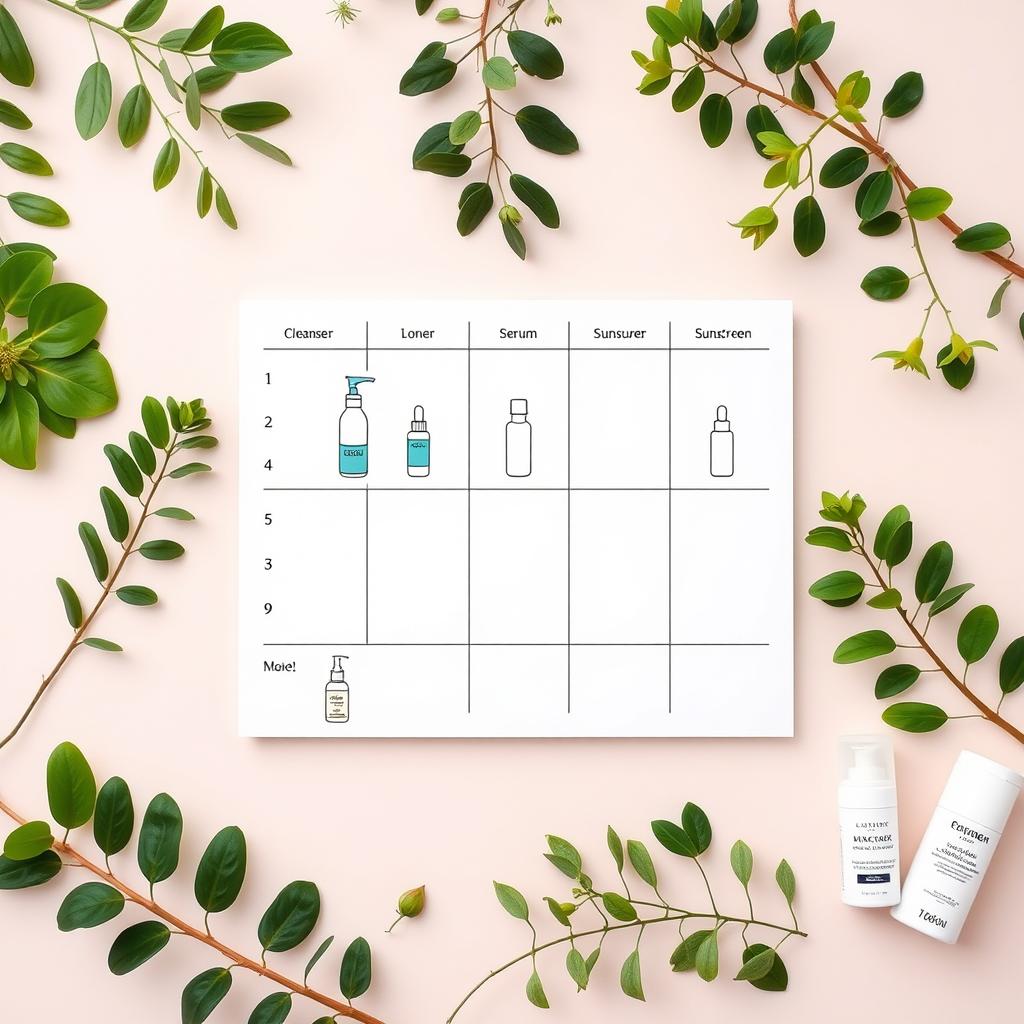
Understanding how products work together is key. My weekly skincare plan balances treatment and protection while staying affordable.
Optimal Product Timing and Usage
Applying products wisely can greatly improve your skin. Here’s a weekly plan:
- Morning routine: Gentle cleanse, light moisturizer, SPF 30
- Evening routine: Deep cleanse, treatments, hydrating moisturizer
- Weekly treatments: Exfoliate, masks, hydrate
The Power of Routine Consistency
Consistency is key in skincare. Most products need 6-8 weeks to work well. Sticking to a routine makes my drugstore beauty products more effective.
| Product | Frequency | Cost per Use |
|---|---|---|
| Cleanser | Twice Daily | $0.40 |
| Toner | Once Daily | $0.50 |
| Moisturizer | Twice Daily | $0.75 |
| Sunscreen | Morning | $0.60 |
“Less is more in skincare. Focus on quality, not quantity.” – Dr. Whitney Bowe
My budget-friendly routine uses multi-purpose products and smart application. I choose versatile solutions and use minimal amounts. This keeps my budget in check and my skin healthy.
DIY Skincare: Exploring Natural Options
Making your own skincare at home is fun and affordable. It lets you use natural ingredients that are good for your skin. This way, you can make products that fit your skin’s needs perfectly.
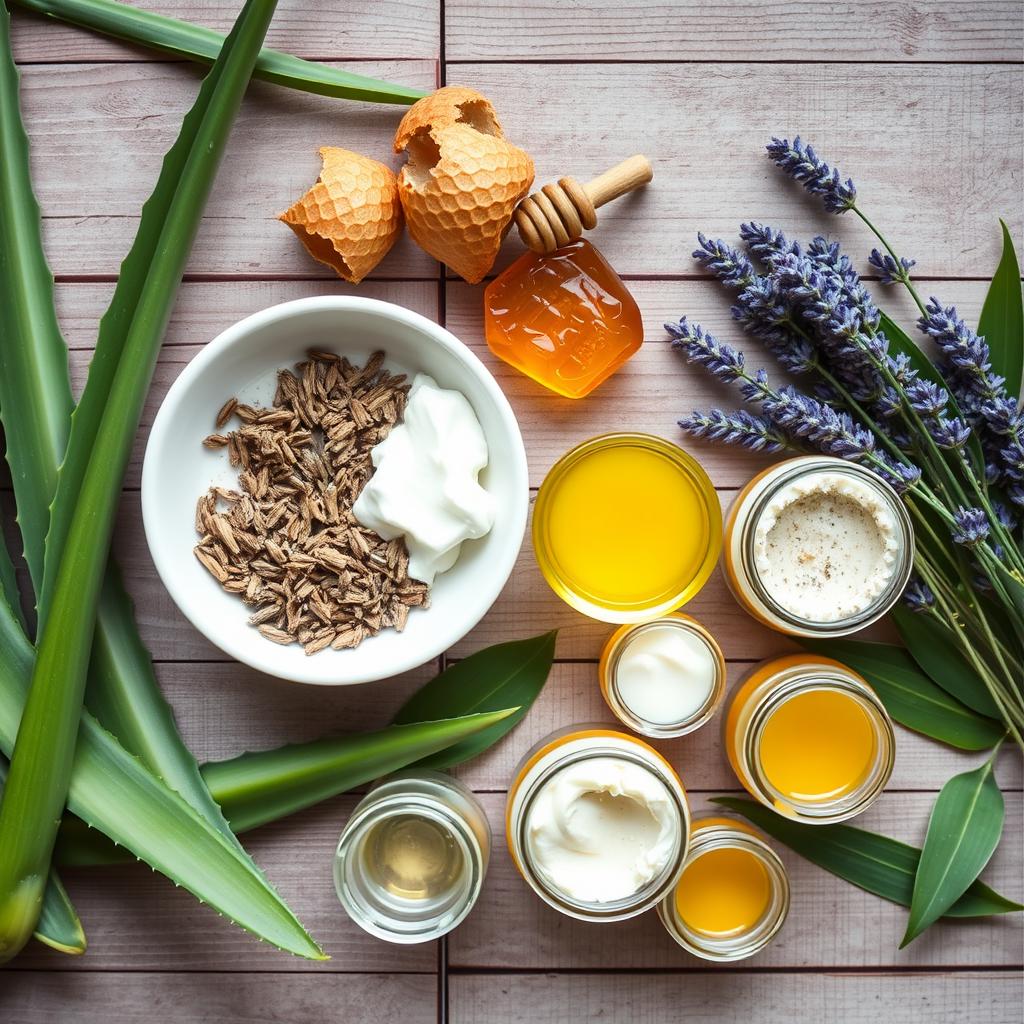
DIY skincare saves money and lets you control what you use. Ingredients like aloe vera, chamomile, and oatmeal are cheap but effective. They help your skin without costing a lot.
Simple Homemade Recipes
- Hydrating Face Mask: Mix ½ avocado with 2 tablespoons aloe vera
- Gentle Exfoliating Scrub: Combine 1 teaspoon honey with 1 teaspoon coconut oil
- Soothing Oatmeal Mask: Blend ground oats with water for a calming treatment
Safety Tips for DIY Skincare
Before making your own skincare, remember these important tips:
- Always do a patch test 24 hours before using it all over
- Use fresh ingredients and clean tools
- Watch for any skin reactions
- Avoid using products past their recommended shelf life
“The ‘less-is-more’ approach can help reduce product complexity and cost,” says Dr. Whitney Bowe.
By spending time on DIY skincare, you can make products that are good for your skin. It’s a way to take care of yourself without spending a lot.
Signs of Over-Exfoliation or Over-Moisturizing
Understanding your skin’s needs is key to a good skincare routine. Even cheap products can cause problems if used wrong.
A study in the Journal of Clinical and Aesthetic Dermatology found that too much exfoliation weakens your skin. My beauty routine aims for balance and gentleness.
Identifying Skin Trouble Spots
Look out for these warning signs:
- Redness and increased sensitivity
- Burning or stinging sensations
- Dry, flaky patches
- Unexpected breakouts
- Skin feeling tight or uncomfortable
Responding to Skin Reactions
When my skin gets upset, I take these steps:
- Stop all exfoliation right away
- Keep my skincare simple
- Choose gentle, fragrance-free products
- Focus on healing my skin’s barrier
*Skin healing requires patience and minimal intervention*
Prevention Strategies
| Skin Concern | Recommended Frequency |
|---|---|
| Exfoliation | 1-2 times weekly |
| Clay Masks | 1-2 times weekly |
| Moisturizing | Twice daily |
My skincare routine works by listening to my skin. It’s important to remember, less is more in a budget-friendly beauty plan.
Adapting My Routine with the Seasons
Skincare isn’t the same for everyone. My routine must change with the weather to keep my skin healthy without spending too much. Each season brings its own needs for my skin.
Knowing how seasons affect my skin helps me choose wisely. I look for flexibility and the right products.
Summer Skincare Adjustments
In summer, my skin needs lighter, breathable products. I use:
- Lightweight, oil-free moisturizers
- Broad-spectrum sunscreen with SPF 30+
- Hydrating serums with hyaluronic acid
- Gentle, water-based cleansers
“Hyaluronic acid can hold up to 1,000 times its weight in water, making it a summer skincare superhero.”
Winter Care for Dry Skin
In winter, my skin needs more moisture. I switch to:
- Cream-based cleansers
- Richer moisturizers with shea butter
- Hydrating masks once a week
- Omega-3 rich diet for skin nourishment
Tracking my skin’s response in a journal helps me pick the best products for each season. This way, I save money without sacrificing my skin’s health.
Understanding Skincare Myths
Skincare can be tough to navigate, with myths and misconceptions everywhere. I’ve found that knowing these myths is key to a budget-friendly skincare routine.
- Natural always means better – This is a dangerous misconception. Not all natural ingredients are safe, and not all synthetic ingredients are harmful.
- Expensive products guarantee better results – Studies show that 70% of consumers fall for this myth, but price doesn’t determine effectiveness.
- Oily skin doesn’t need moisturizer – Surprisingly, 50% of people with oily skin believe this, which can actually worsen skin conditions.
Natural vs. Scientific Products: The Real Story
When creating an affordable skincare routine, it’s important to know that both natural and scientific products have their place. The key is to focus on ingredients, not marketing hype.
| Myth | Reality |
|---|---|
| Natural products are always safe | Some natural ingredients can cause irritation or allergic reactions |
| Synthetic products are harmful | Many scientifically developed ingredients are safe and effective |
| More expensive means better | Ingredient quality matters more than price |
“Don’t let myths drive your skincare decisions. Knowledge is your best investment in an affordable skincare routine.”
Debunking Common Misconceptions
My research showed some surprising facts about skincare myths. For example, 85% of people think they can shrink their pores, but pore size is mostly determined by genetics. Knowing these truths can save you money and frustration in your skincare journey.
Remember, a good budget skincare routine is about understanding your skin’s unique needs, not following trends or myths. By staying informed and making smart choices, you can get healthy skin without spending a lot.
Cost-Effective Tools and Accessories
Building a drugstore beauty routine doesn’t mean you have to sacrifice quality. I’ve found that simple, affordable tools can greatly improve your routine without costing a lot.
When looking for budget-friendly skincare accessories, here are some tips to help you save:
- Invest in multipurpose tools that serve multiple skincare functions
- Look for durable accessories that can be cleaned and reused
- Prioritize essential tools over trendy gadgets
Essential Daily Routine Tools
My favorite affordable tools include:
- Microfiber washcloths ($5-$10 for a pack)
- Reusable cotton rounds
- Silicone facial cleansing pads
- Basic facial rollers
Smart Shopping for Skincare Accessories
I’ve found great deals at drugstores and online. Brands like EcoTools and Real Techniques offer quality tools for under $15. Amazon and Target are great places to find affordable skincare accessories that work well.
“Great skincare doesn’t have to be expensive – it’s about smart choices and consistent care.”
Maintenance Tips for Longevity
To make my tools last longer, I always:
- Clean tools after each use
- Air dry thoroughly
- Replace tools every 3-6 months
- Store in clean, dry areas
By choosing essential, affordable tools, I’ve made a budget-friendly skincare routine. It gives me professional-level results without the high cost.
Listening to My Skin: Adjust as Needed
Creating an effective skincare routine isn’t about following strict rules. It’s about understanding my unique skin and adjusting to its needs. My skincare journey requires careful observation and a willingness to adapt my budget-friendly products strategy.
Tracking my skin’s response helps me make smarter, more inexpensive self-care choices. A skincare journal becomes my personal roadmap to understanding what works best for my complexion.
Creating My Skincare Journal
When documenting my skincare experience, I focus on key details:
- Product used
- Date and time of application
- Skin’s immediate reaction
- Long-term changes observed
- Environmental factors
Identifying Product Effectiveness
Evaluating budget-friendly products requires patience and systematic tracking. I look for consistent improvements or persistent issues that indicate whether a product truly suits my skin.
| Positive Signs | Negative Signs |
|---|---|
| Improved skin texture | Increased breakouts |
| Reduced redness | Persistent dryness |
| Better hydration | Irritation or burning sensation |
“Know your skin better than any product label ever could.” – Skincare Wisdom
Remember, inexpensive self-care doesn’t mean compromising quality. By carefully listening to my skin and documenting its responses, I can craft a personalized routine that works perfectly for me.
Staying Informed About New Products
Keeping up with skincare trends can be tough, but it doesn’t have to cost a lot. Social media sites like Instagram and YouTube are great for finding skincare tips and affordable products. Beauty experts and influencers share their honest opinions and budget-friendly picks for free.
To follow skincare trends without spending too much, I do my homework. I look for advice from dermatologists and check out reliable beauty websites. This way, I can pick new products that are worth it for my budget without overspending.
Researching New Launches Without Overspending
Before buying a new skincare product, I wait at least two weeks. This helps me avoid buying on impulse and see if the product really fits my routine. I also try samples, read lots of reviews, and compare prices to make smart choices and save money.
Following Skincare Trends on a Budget
Many new skincare trends can be tried without spending a lot. Brands like CeraVe and La Roche-Posay offer quality products at good prices. By being careful and patient, I can try out new things without hurting my wallet or my skin.
FAQ
How can I create an effective skincare routine on a budget?
How do I know my skin type?
Are drugstore skincare products effective?
How often should I exfoliate on a budget?
Can I make my own skincare products to save money?
How do I adjust my skincare routine between seasons?
What are the most important skincare steps I shouldn’t skip?
How can I tell if a skincare product is working?
Source Links
- My Budget-Friendly Nighttime Skincare Routine — Skinthusiast
- Gentle Care, Friendly Prices: An Affordable Skin Care Routine for Sensitive Skin
- Affordable Skincare Tips for Healthy, Glowing Skin
- A Beginner’s Guide to Skincare
- How to Create a Skin Care Routine for Your Skin Type
- Unlock Healthier Skin: Know Your True Skin Type!
- Simplify skin care with this 3-step routine – CampusWell
- Investing in Self-Care: Affordable Strategies for Long-Term Skin Health
- learner: Affordable and Effective: Top Skincare Products for Glowing Skin
- Best Skincare on a Budget: Affordable Skincare
- Gentle Care, Friendly Prices: An Affordable Skin Care Routine for Sensitive Skin
- I Built My Skincare Routine for Under $40 Using This Affordable Amazon Brand
- I Simplified My Skin Care Routine, and I’m Obsessed With the Results
- The Simple Skincare Routine Everyone Should Do Every Day, According to Experts
- Gentle Care, Friendly Prices: An Affordable Skin Care Routine for Sensitive Skin
- How to build a compact but effective skincare routine, with under S$30 products
- Building Your Perfect Skin Care Routine
- Gentle Care, Friendly Prices: An Affordable Skin Care Routine for Sensitive Skin
- 13 Natural Dry-Skin Remedies to DIY
- Gentle Care, Friendly Prices: An Affordable Skin Care Routine for Sensitive Skin
- Everything But The Kitchen Sink: 20 DIY Natural Skin Care Recipes You Can Do At Home!
- Skincare tips: Over exfoliation, artificial fragrances, charcoal masks do more harm than good
- When To Exfoliate In Skincare Routine
- Seasonal Skincare Transition: How to Adapt Your Routine
- Seasonal skincare routine: Expert tips on how to tweak your skincare for different weather
- Debunking Skincare Myths
- Beauty Mythbusters: Debunking Common Skincare and Hair Care Myths
- Debunking Common Skin Myths for Healthier Skin | Dermo Direct
- The Best Gen’C Beauty Finds Under $10 for a Smooth & Radiant Skincare Routine
- The Best Skin-Care Routine for Your 30s
- The 57 best Amazon beauty products our shopping editors swear by
- The Correct Order to Apply Your Skincare Products. – The Stripe
- The best skincare routine to use in your 30s
- The Best Skin-Care Routine for Your 40s
- We Asked Top Dermatologists to Share Their Skin-Care Routines—Plus, the Products They Actually Use
- #Ask The Team: How Many Products Makes The Perfect Skincare Routine?
